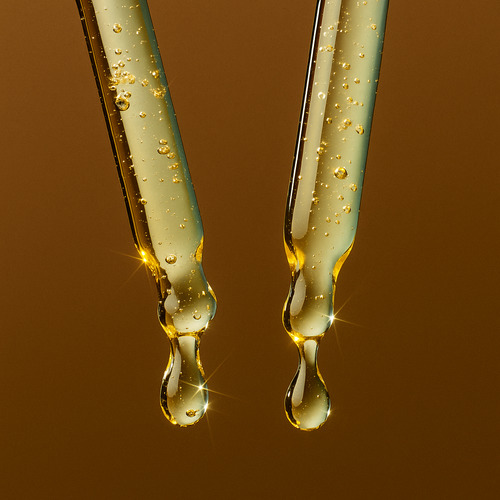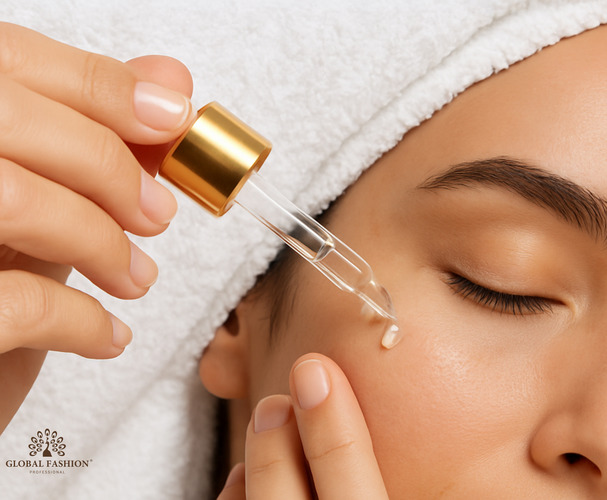In the world of skincare, there is a wide range of moisturizing ingredients — from glycerin to plant-based oils. Hyaluronic acid and squalane have gained popularity particularly quickly, and it’s no surprise: they can be found in everything from serums and cleansers to moisturizers and makeup. These ingredients are valued for their lightweight texture and ability to work in complete harmony with the skin’s natural barrier.
At first glance, hyaluronic acid and squalane may seem similar, but in reality, they have different properties and serve entirely different functions. Choosing the right ingredient depends on your skin type and its specific needs.
To understand which one will become your ideal skincare ally, read our detailed article.
What is squalane?
Squalane is a lab-created, hydrogenated form of squalene, a natural lipid found in sebum that helps moisturize the skin. It acts as a powerful emollient: softening and smoothing the skin, locking in moisture, strengthening the skin barrier, and offering antioxidant benefits, helping prevent and repair damage caused by free radicals.
If you’re curious about the difference between squalane and squalene, it’s important to know the following: squalane is a stabilized form of squalene, designed to retain all its beneficial properties for the skin while lasting longer without degrading.
Squalene, on the other hand, is an unstable molecule that breaks down over time. As we age, the natural production of squalene in the skin decreases, making the addition of these ingredients especially beneficial for dry skin. Squalane is lighter than squalene and suitable even for acne-prone skin, making it versatile and convenient for daily use.
Squalene, on the other hand, is an unstable molecule that breaks down over time. As we age, the natural production of squalene in the skin decreases, making the addition of these ingredients especially beneficial for dry skin. Squalane is lighter than squalene and suitable even for acne-prone skin, making it versatile and convenient for daily use.
What is hyaluronic acid?
Hyaluronic acid is a powerful humectant capable of attracting and retaining water in the skin, providing deep hydration and radiance. This natural component is found in the skin, eyes, and joints, and in cosmetics, it is used as an active moisturizing agent that helps maintain optimal moisture levels.
It instantly gives the skin a “plumping” effect: making it firmer, smoothing fine lines, and imparting a healthy glow. Thanks to its hydrophilic nature and gentle action, hyaluronic acid has become one of the most popular and sought-after ingredients — it’s no wonder that most brands proudly highlight its presence in serums and creams.
Squalane and Hyaluronic Acid: Key Differences
The main difference between squalane and hyaluronic acid lies in their chemical composition and how they moisturize the skin. Here’s a brief scientific breakdown: Squalane is a lipid, while hyaluronic acid is a glycosaminoglycan—a chain of sugar molecules. Hyaluronic acid acts as a humectant, attracting water to the skin, whereas squalane works as an emollient, creating a barrier that locks moisture inside the skin.
However, the difference in their mechanisms does not mean these ingredients don’t have something in common. Both help maintain healthy, hydrated skin. Both are hypoallergenic and suitable even for sensitive skin.
They are moisturizing molecules that increase the skin’s water content. Both components occur naturally in the body: hyaluronic acid in the skin, and squalene in nature, with squalane being its stabilized, chemically modified form.
The choice between squalane and hyaluronic acid depends on your skin’s needs. Both ingredients are effective for all skin types, including sensitive skin. Hyaluronic acid is ideal for oily or acne-prone skin: it’s lightweight, hydrates the skin’s surface, and doesn’t clog pores. Squalane is great for dry skin, and it can also be used in products for acne-prone skin.
How often you use them depends on the product format—serum, lotion, or cream—but they are best applied once or twice a day. Both ingredients work equally well in creams and lotions.
Is it possible to combine squalane and hyaluronic acid?
Yes, squalane and hyaluronic acid can be used together—either in the same product or separately. If applied separately, use hyaluronic acid first: it attracts moisture to the skin, providing deep hydration. Then apply squalane—it creates a light protective barrier that locks in moisture and prevents evaporation, keeping the skin soft and hydrated.
———
Ultimately, both hyaluronic acid and squalane are outstanding skincare ingredients suitable for almost any skin type. They help restore the skin’s natural hydration levels, making them equally effective for dryness and dehydration. The key is to choose a formula that matches your specific skin type. Both ingredients work well for dry, acne-prone, inflamed, and even sensitive skin. The choice between them comes down purely to personal preference.
Face serum with hyaluronic acid


